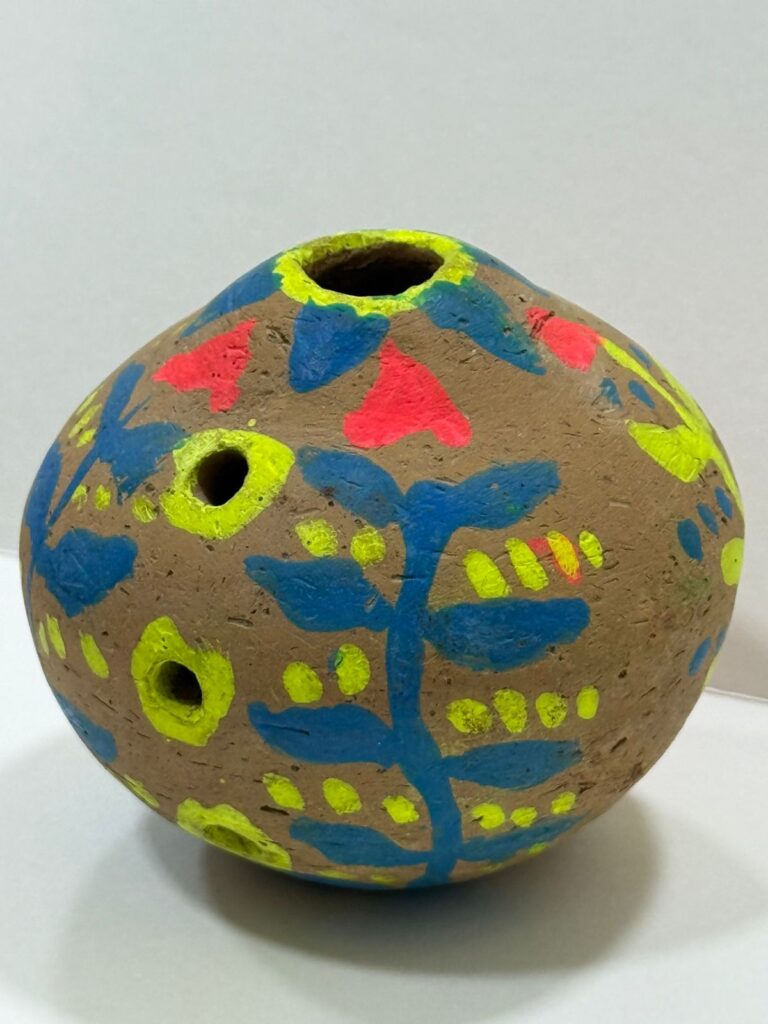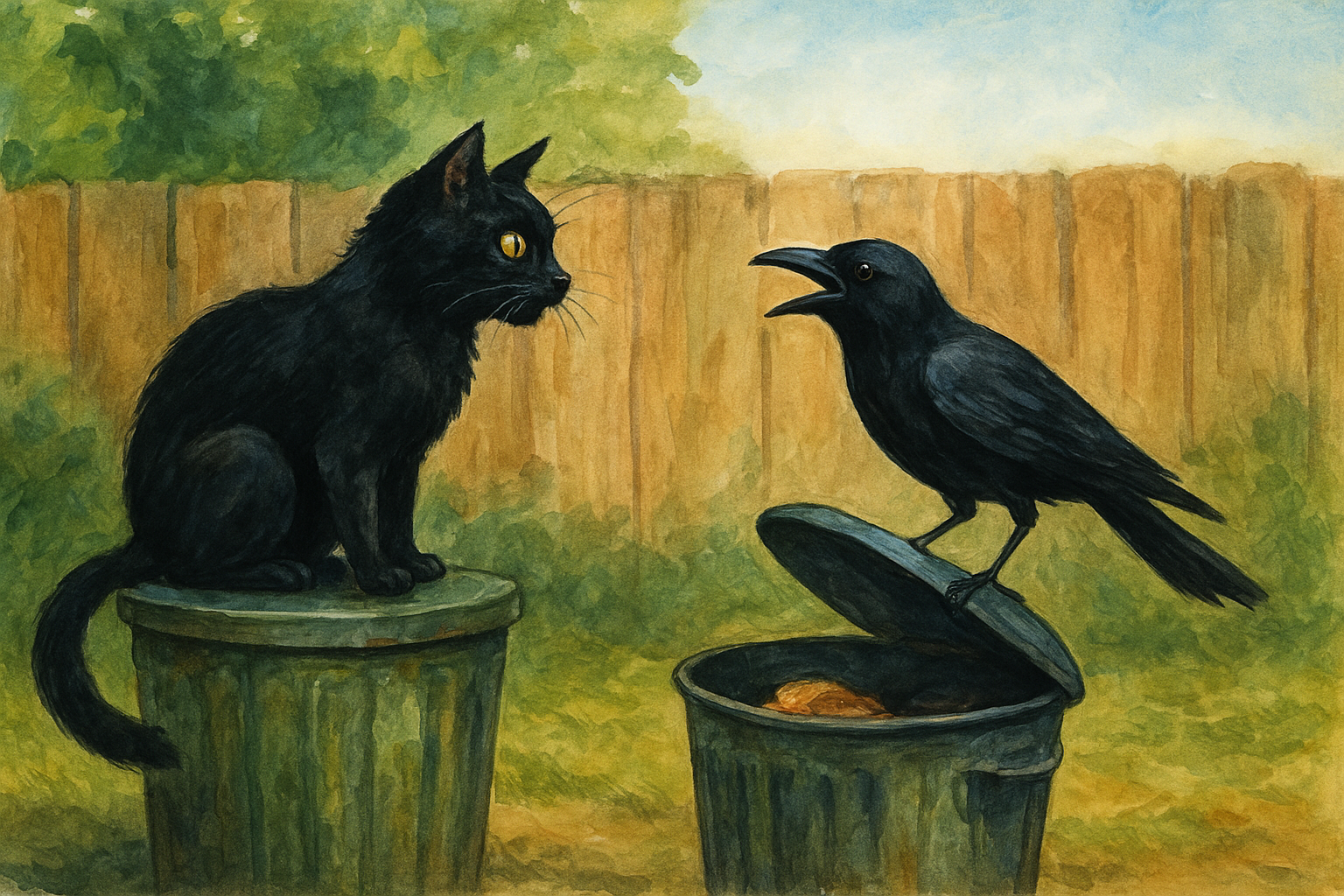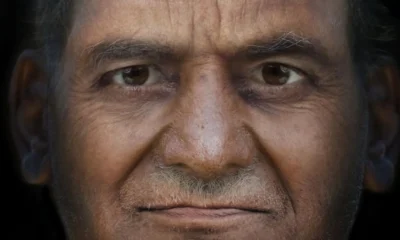Art & Culture
Why worm poaching is threatening India’s wetlands

India’s bristle worms are often overlooked. But they are crucial to the health of the country’s wetlands – which is why local women are working to catch the poachers decimating their population.
Jyothi, 40, will never forget the day she almost died. The morning started off like any other at Pulicat Lake, part of one of three important wetlands that attracts monsoon rain clouds from October to December. Located on the east coast of India, 50km (30 miles) from the city of Chennai, Pulicat Lake is an enchanting lagoon, roughly half the size of the city of London. Pink flamingos dot its sandy banks. Migratory birds flock to its many islets in their thousands, while fishermen cast their nets into the glassy waters.
On that day in May 2022, Jyothi, who goes by only one name, had set off to work by 09:00 with 10 other women. Rain had soaked the mud paths, making the way treacherously slippery, but the women were adept at navigating the rough terrain. Their job was to wade ankle-deep in the marshy waters of the lagoon’s inlets, hunting for fresh fish, shrimp and crab. Two to three kilos of catch, a good day’s haul, could fetch ₹500 (£5/$6.25).
As Jyothi waded into the lagoon, she felt something close over her right foot. She slipped. Her head went under. Entangled in the roots and shrubs, she couldn’t surface on her own. Terrified, gulping marshy water, she only avoided drowning thanks to the other women who pulled her to safety.
After she was back on the marshy banks, she looked closely at what had caused her to slip. It was a white bucket, the width of her foot. When she had accidentally stepped into it and lost her balance, she couldn’t pry it off. Now she saw why it was there: shimmering inside were squiggling, translucent pink creatures known as bristle worms, or polychaetes.
These poachers aren’t just stealing worms, they’re destroying an entire ecosystem by breaking the food chain, a vital link that keeps it together – Sultan Ahmed Ismail
Ten species of polychaetes have been identified so far at Pulicat, all of them endemic. They are a crucial part of the lagoon’s ecosystem. Among other roles, they are a main source of food for its fish and crustaceans – which feed not only humans, like those who buy catch from Jyothi, but birds and animals too.
The worms also are a prize of local poachers. Often, the poachers fix empty buckets, like the one that had caught Jyothi’s foot, in the muddy floors of the shallow waters to fill with worms, collecting them later. They sell the worms as feed to the dozens of aquaculture farms, many illegal, that dot the banks of Pulicat.
“I realised at that moment that it was human greed, and not the worms itself, that almost cost me my life,” Jyothi says now.
But Pulicat’s worm poaching threatens other consequences for Jyothi – and for the entire area.
“Pulicat Lake is what is known as an ‘ecotone’ – a transition zone between two ecosystems, in this case, land and water,” says soil biologist and ecologist Sultan Ahmed Ismail, one of the pioneers of worm research in India. The species that thrive in these ecotones, called “edge species”, are integral to the ecosystem’s wellbeing. The polychaetes are among these edge species, particularly a group of worms called nereids.

Like fish, these nereids need the dissolved oxygen in the saline waters to survive. They get this oxygen by burrowing into the soil and breathing through the surface of their bodies; some species have external gills. They eat detritus: the organic matter produced by the decomposition of other organisms and waste products that settles at the water bottom. This detritus contains dead phytoplankton, which is highly nutritious for fish, crabs and other crustaceans, says Ismail.
The fish and crustaceans rely on this detritus, which they get by consuming the worms. While it may seem more efficient for the fish and crabs to directly eat the detritus, there are several reasons why they prefer to eat the worms themselves, says Ismail. The nutrients from the detritus concentrate in the worms; the worms also are easier to digest than the detritus itself. “These poachers aren’t just stealing worms, they’re destroying an entire ecosystem by breaking the food chain, a vital link that keeps it together,” says Ismail.
“When natural predators take away the worms, it’s a gradual process and they’re soon replenished. But when hundreds and thousands of worms are dug out of the soil and taken away by force, their numbers cannot be replenished at the same rate. There aren’t enough adult worms left to accomplish that,” Ismail says.
If the worms start to dwindle, so will the fish, crab and the livelihoods of locals, including Jyothi.

“Worm poaching has been happening for years, and it’s particularly affecting the livelihoods of 2,000 tribal women who depend on hand fishing for a living in these parts,” says S Meerasa, founder and director of the non-governmental organisation the Mangrove Foundation of India.
The poachers usually sell the worms to fish farms, which pay 1,000-4,000₹ (£10-40/$12-50) to poachers for every kilogram of worms they harvest. The worms are fed to fish and prawns. “The amino acids in the worms add to the colour of the fish, so they’re in great demand,” says Ismail. While some fishing is legal, there are also numerous illegal farms in Pulicat, which are frequently ordered to shut down.
“The poachers steal the worms in broad daylight, and they usually start digging from 6:00,” says Lakshmi, 60, who hauls fish with Jyothi and also goes by one name. “They’ve erected makeshift sheds and pitched tents on the outskirts of our villages.” The women describe the poachers as “brash and thoughtless”. They’ve scooped out so many worms from the soil that there are now huge craters along the wetlands, they say, some two or three feet deep. “Elderly people who are afraid of falling into them have stopped handpicking,” Lakshmi says.
“I have friends and neighbours who have been badly hurt,” Jyoti adds. “Some have broken hands and legs, and worst of all, hips, while falling into the craters.”
The pockmarked wetlands are a serious hazard to everyone. But the stress on the ecosystem is also concerning. “Ten years ago, I could walk a kilometre from my home and handpick fish from the mangroves outside,” Jyoti says. “Today, we need to walk 5km to the nearest handpicking spot and even there, fish and crab which once used to be abundant are dwindling at an alarming rate.”
Women from our community have chased poachers away from key handpicking areas – Jyoti
There is also a vicious cycle that will occur as the worms become scarcer, Ismail says. The fewer there are, the less arable the soil becomes. And the less arable the soil becomes, the fewer worms will survive. “These are very sensitive worms,” he says. “Any change in the water content and the salinity of the soil (which can happen when poachers dig out chunks of them) can affect the remaining ones too.”
It isn’t just animals that are suffering from the worms’ decline. Worm poaching could be one of the causes for a slow decline of mangrove vegetation at Pulicat Lake, Meerasa says. This is a problem, as mangroves reduce the risk of soil erosion, protect coasts from tsunamis, and aid in the capture of carbon that can slow global warming.
Various NGOs, including the Mangrove Foundation of India, have tried to fill the ecological gaps. Since 2021 alone, the Mangrove Foundation has planted around 50,000 mangrove saplings. In 2012, Meerasa says they began a community effort to dig canals to support the transplanted mangroves. In some spots of the lagoon, especially in interior villages, a lack of water circulation for the mangroves was a growing problem. Digging the canals was a community effort, however, the worm poachers have hampered progress. “When they dig up the worms, they end up filling in the mud bunds of the canal with dirt and silt, impeding the water flow and disrupting our efforts.”
With the government authorities taking little action, locals say, it has been up to nearby communities – particularly handpickers like Jyoti and Lakshmi – to try to oppose the poachers. “Women from our community have chased poachers away from key handpicking areas. We’ve taken turns standing vigil at many spots around our village,” says Jyoti. The Tamil Nadu Forest Department, which oversees the region, did not respond to the BBC’s requests for comment.
Some villages have had more luck than others. In the Palaverkadu area of Pulicat, locals say worm poaching has reduced substantially.
With other women from the union, Veeramal, who goes by one name, has taken a three-step strategy: watching out for suspicious activity, trying to speak to the would-be poachers, and finally, reporting them. Not reporting them to the authorities, but to a network of fishermen and other prominent members of the community, who then try to reason with the poachers further. “When women put their mind to it, they can do anything,” says Veeramal, 46, a former treasurer of the Thiruvallur District Fish Worker Welfare Association, a local union.

“We are hyper-alert to small groups of men who may not be from our particular village. When we see them skulking around, especially with trowels, shovels and buckets, we know that they’re here to poach worms,” she says. “I engage firmly and kindly… I talk to them about the repercussions of what they’re doing.” Sometimes she says the reasoning works, and the men retreat – at least on that occasion.
It doesn’t always work. If she finds that the men are rude, physically abusive or just not open to discussion, she calls on her network. “I call the men of our village, and they take over,” she says. “Instinctively, if I suspect a group of poachers could be violent, I call to report them before engaging. But we’ve never given up on engagement.”
This approach has not worked in all of the surrounding villages. Often, women say, villagers themselves are bribed to look the other way. “We can’t be everywhere and their numbers keep increasing,” says Jyoti.
Officials from the Tamil Nadu Forest Department, responsible for law enforcement in the Pulicat area, did not respond to the BBC’s requests for comment.
Worm poaching is not just limited to Pulicat. “Worm poaching is a problem across India,” says Ismail. “We just don’t hear about it.” The worms are found in similar ecosystems in parts of Mumbai, Kochi and Chilika Lake in Odisha, which is India’s largest brackish water ecosystem.
The solution Ismail suggests may seem surprising: not punishing the poachers, but rather legalising the worm trade, restricting it to a very small area of Pulicat Lake. This would keep poachers from running roughshod over the entire ecosystem, he says. And in this predefined area, the worms can be cultured from the larval stage to meet the needs of the aquaculture industry. This would require careful monitoring, he says. Meerasa adds that this could be coupled with significantly raising fines for illegal activity.
“[Poachers] are only thinking of the here and now, the money they will earn today, but what about tomorrow?” Veeramal asks. “In the end, we try to tell them that what they’re stealing aren’t just worms – it’s our future.”
—
For essential climate news and hopeful developments to your inbox, sign up to the Future Earth newsletter, while The Essential List delivers a handpicked selection of features and insights twice a week.
Taken From BBC News
https://www.bbc.com/future/article/20250311-the-women-fighting-indias-worm-poachers
Art & Culture
From Bank Lines to Bus Seats: Bold Lessons in Courtesy, Courage, and Everyday Survival

In the line of bill payers at the bank,
As the fairer sex,
If sick, don’t just be blank
“Ladies first”, “excuse me11, “before you please.”
For deals with unpaid bills,
Ask for goods back, threat if you will,
Repeat the request for a job.
You may make it from the mob,
Instead of standing, share the seat on the bus
Isn’t it much better than making a fuss,
Whatever you do during tug-of-war, do not push the rope
Or you’ll be the laughing stock amidst cries of, “What a dope.”
Art & Culture
Bareendo of Pakistan Inscribed on UNESCO’s Intangible Cultural Heritage (ICH) List

Paris(Imran Y. CHOUDHRY):- Bareendo (Bhorindo), one of the oldest surviving folk instruments of Sindh, has been officially inscribed on UNESCO’s list of Intangible Cultural Heritage (ICH) in need of urgent safeguarding. The decision was adopted at the 20th Session of the Intergovernmental Committee for the Safeguarding of the Intangible Cultural Heritage.

The Bareendo is a clay wind instrument whose origins trace back to the 5,000-year-old Indus Valley Civilization. It is a symbol of Sindh’s spiritual and communal traditions. For centuries, its soft and meditative tones have accompanied winter gatherings, Sufi practices, and rural celebrations. Today, however, the tradition is endangered, with only one master musician, Ustaad Faqeer Zulfiqar, and one master potter, Allah Jurio, preserving its complete knowledge.
The nomination of Bareendo as an ICH in urgent need of safeguarding is the result of an intensive consultative process between the Government of Sindh, Pakistan Mission’s to UNESCO in France and the UNESCO Headquarters. It was inspired by a community-led and participatory process in the village of Keti Mir Muhammad Loond village in Sindh province to protecting Bareendo as a cultural heritage. Their efforts shaped the comprehensive Four-Year Safeguarding Plan (2026–2029), which includes the establishment of a community music school, integration of Bareendo heritage into formal and informal education, and the use of digital platforms to expand cultural outreach. UNESCO’s inscription will support the conservation process.
Permanent Delegate of Pakistan to UNESCO Ambassador Mumtaz Zahra Baloch welcomed the decision of UNESCO’s Intergovernmental Committee to inscribe Bareendo as an Intangible Cultural Heritage in urgent need of safeguarding. “The inscription of Bareendo is a proud moment for Pakistan and a tribute to the communities who have preserved this ancient instrument and music for generations. Bareendo is not only an emblem of the Indus Valley’s cultural continuity but also a living expression of Sindh’s artistic and spiritual heritage.”
“This recognition by UNESCO reaffirms Pakistan’s commitment to the protection and promotion of our diverse cultural traditions. We look forward to working closely with UNESCO to ensure that the knowledge, craftsmanship, and musical identity of the Bareendo is transmitted to future generations”, she said.
Art & Culture
“The Backyard Ballet: Cat and Crow in Comic Courtship — A Poem by Zeenat Iqbal Hakimjee”

My backyard is livened up
By the cat and the crow.
From a distance they for each other
A liking show.
Caw Caw, Meow Meow they hark & howl.
A din enough, to disturb the neighbouring fowl
Both of them perched on the dustbin.
Turn by turn.
Waiting for a morsel, from the kitchen to return.
Up goes the left over meat, in the air,
What ensues would ashame ‘The battle for the chair
-

 Europe News10 months ago
Europe News10 months agoChaos and unproven theories surround Tates’ release from Romania
-

 American News10 months ago
American News10 months agoTrump Expels Zelensky from the White House
-

 American News10 months ago
American News10 months agoTrump expands exemptions from Canada and Mexico tariffs
-

 American News10 months ago
American News10 months agoZelensky bruised but upbeat after diplomatic whirlwind
-

 Art & Culture10 months ago
Art & Culture10 months agoThe Indian film showing the bride’s ‘humiliation’ in arranged marriage
-

 Art & Culture10 months ago
Art & Culture10 months agoInternational Agriculture Exhibition held in Paris
-

 Pakistan News6 months ago
Pakistan News6 months agoComprehensive Analysis Report-The Faranian National Conference on Maritime Affairs-By Kashif Firaz Ahmed
-

 Politics10 months ago
Politics10 months agoUS cuts send South Africa’s HIV treatment ‘off a cliff’




















